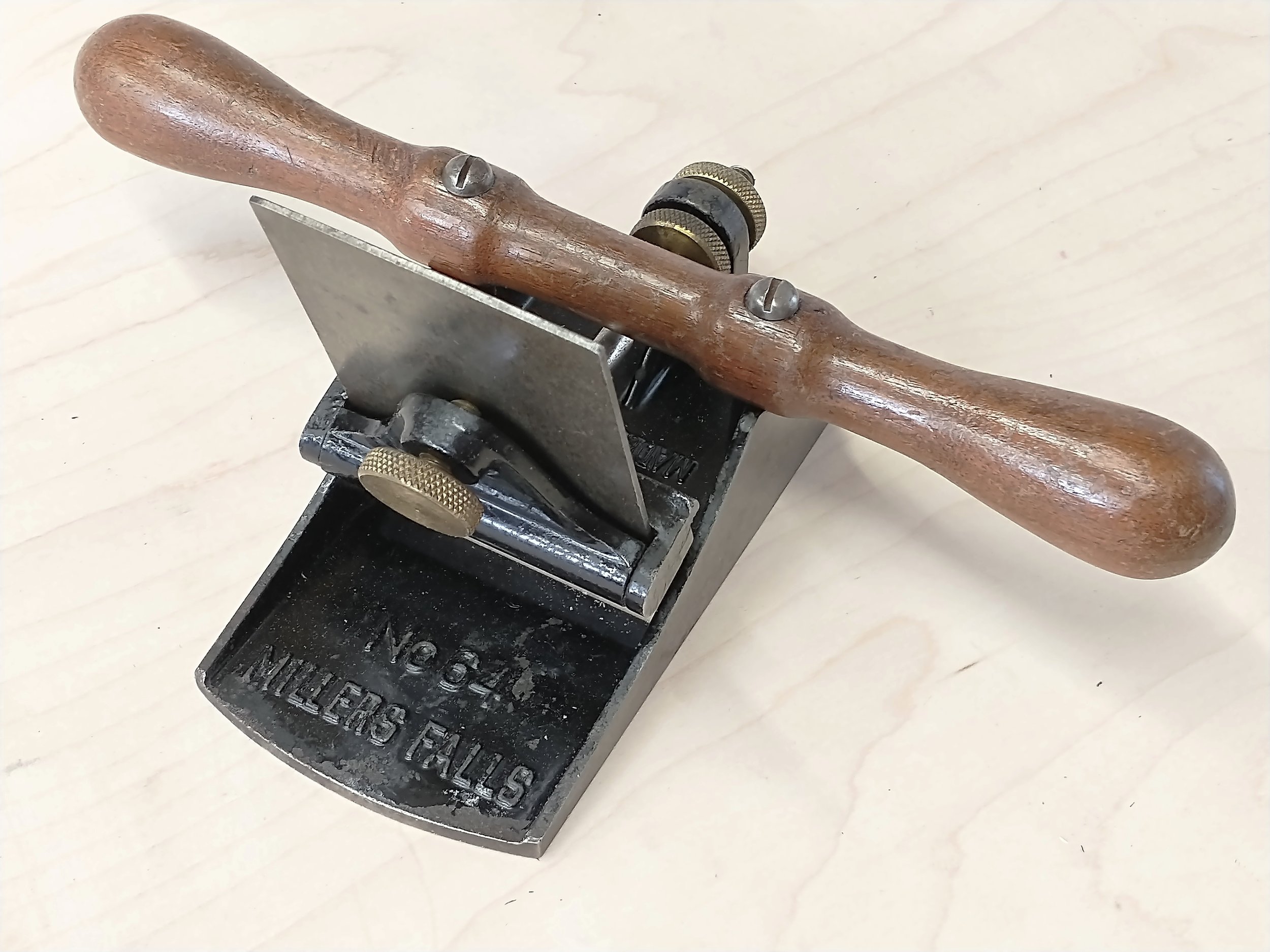
No. 64 Scraper Plane
No. 65 Scraper Plane
|
Model: |
64 |
65 |
|---|---|---|
| Manufactured: | 1929 to 1942** | 1929 to 1942** |
| Sole Length: | 6-3/8” | 6-3/8” |
| Sole Width: | 3-3/8” | 3-3/8” |
| Iron Width: | 2-7/8” | 2-7/8” |
| Iron Thickness: | 1/8” | 1/8” |
| Weight: | 3.2 lbs | 3.4 lbs |
| Adjustments: | Two Nuts | Two Nuts |
| Casting Body: | 360 | 363 |
| Cross Reference: | Stanley No.12 | Stanley 12-1/2 |
** The 64 and 65 were temporarily discontinued on October 1942 with existing inventory filling prior orders. The two planes were discontinued from production as of February 1944.
No. 64 and No. 65
Unlike a bench plane, the scraper plane uses a burr to scrape a large area resulting in a smooth surface. To use this tool, a burr is applied to the outside of the 45 degree bevel. To mount the iron, the bevel is facing the back of the plane where the adjustment nuts are located which means the burr is facing forward. The iron is tilted toward the front and can be adjusted for the best angle with the two adjustment nuts. The plane is pushed in the same direction as the tilted iron.
Both models have the Millers Falls name and number embossed on the bed near the toe. The two adjusting nuts at the heel allow for a wide angle adjustment based on how the edge was rolled, and how light the surface is scraped. The handle used on both planes was made from rosewood. The iron had at least two versions of the “Since 1868” trademark stamped on them.
The No. 65 functions the same way as the No. 64. The sole has a thin piece of rosewood secured to the body with four screws. This rosewood sole can easily be changed should any damage happen to it. There have been examples where the screw holes for the No. 65 were never drilled to attach the rosewood sole. It is not known if these were sold in place of the No. 64.
From 1942 to 1944, these two planes had limited production because of rations with the war. Any examples with hardwood handles would be from the early forties.

This is a No. 64 with a metal sole.

Both the No. 64 and No. 65 scraping planes have a non-flexing thicker iron.

The heel has the double locking nuts which allows the iron to be adjusted at an angle for optimum performance.

No. 65 showing the embossed name and number with the screws to secure the rosewood sole.

This is a No. 65 but does not have the screw holes to attach a rosewood sole. It is not clear why this was done.

The number is missing from this scraper. It should have had a No. 65 cast on the bed.

These two examples are cast as No. 65 but cannot secure a wooden sole.

Rosewood sole on the No. 65.

Trademark stamped in the middle of the scraper blade.